The health and safety of horses are paramount for owners and caretakers. Among the various factors that can pose a risk to equines, the presence of certain trees in the environment is particularly concerning. Specific trees toxic to horses have the potential to cause serious illness or even death if ingested. It is crucial that horse owners are aware of which tree species are harmful and the symptoms of toxicity to ensure the well-being of their animals.
Preventing exposure to toxic trees and managing symptoms of poisoning are key to maintaining a safe environment for horses. Treatment strategies and safe pasture management play a critical role in protecting equine health. Understanding the legal and ethical implications of maintaining land with potentially dangerous flora is essential for horse owners. Being well-informed about trees safe for horses and toxic trees can equip caretakers with the knowledge needed to take appropriate precautionary and remedial actions.
Key Takeaways
- Identifying toxic trees and their symptoms is essential for horse health.
- Effective management and treatment are crucial when dealing with tree poisoning.
- Knowledge of safe pasturing and preventive measures contributes to equine safety.
Overview of Trees Toxic to Horses
Owners must exercise caution, as some trees are hazardous to horses, with toxicity levels that vary depending on the species, season, and region, particularly in North America.
Common Toxic Trees
In North America, several trees pose significant risks to equine health. Among the most toxic trees, the Red Maple (Acer rubrum) can be deadly. Leaves from these trees, particularly when wilted or fallen, contain toxins that can destroy red blood cells, leading to anemia in horses. Yews (Taxus spp.) are equally dangerous, containing compounds that can rapidly affect cardiac function, often resulting in sudden death. Other notable toxic trees include:
- Black Walnut (Juglans nigra): bedding made from black walnut shavings can cause laminitis in horses.
- Oak (Quercus spp.): acorns, leaves, and branches contain tannins that can cause kidney damage and colic if ingested in large amounts.
- Cherry and Plum Trees (Prunus spp.): leaves and seeds contain cyanogenic glycosides, which can be fatal if consumed in sufficient quantities.
Seasonal Risks and Variations
The seasons greatly influence the toxicity of trees to horses. For instance, during autumn, fallen leaves from the Red Maple or those damaged by frost increase the risk of poisoning if horses have access to them for an extended period. Seasonally toxic trees can also present dangers in different forms when environmental conditions such as drought or frost affect the concentration of toxic compounds.
It’s vital to recognize that the toxicity of the same species can vary based on regional differences in soil composition and climate, which in turn affects the potency of the toxins. Horse owners must be vigilant year-round, but especially in fall and after storms when branches and leaves are more likely to fall within reach of grazing horses.
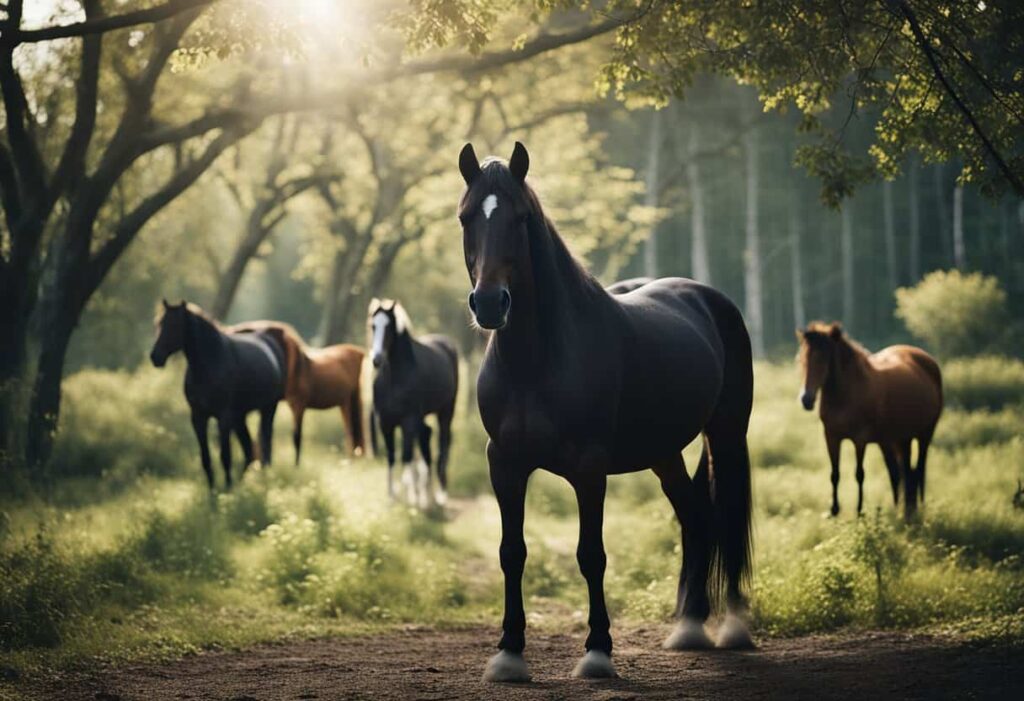
Specific Trees and Associated Toxins
In assessing the risk certain trees pose to equine health, it is important to consider the specific toxins that these trees contain. Toxicity can vary significantly between different tree species, and understanding these variations is critical for preventing poisoning in horses.
Red Maple and Oak
Red Maple (Acer rubrum) poses a severe risk to horses primarily through the ingestion of wilted leaves, which contain toxins that can damage red blood cells, leading to anemia. It is particularly dangerous in the fall when leaves are falling and may inadvertently end up in pastures. Oaks (Quercus spp.) contain tannic acid, which can cause kidney damage and gastrointestinal upset when large quantities of leaves or acorns are consumed.
Yew and Oleander
Yew (Taxus spp.) is a highly toxic tree with all parts containing potent compounds that can lead to sudden death in horses due to cardiac arrest. Oleander (Nerium oleander) is similarly dangerous, with toxins that affect the heart and can be lethal even in small amounts. Horses must be kept away from these plants at all times.
Black Walnut and Cherry
Black Walnut (Juglans nigra) can cause laminitis in horses, a painful and potentially crippling condition when horses are exposed to the tree’s wood shavings or sawdust used as bedding material. Cherry trees and other members of the Prunus family contain cyanide, particularly in their wilted leaves and pits, which can interfere with oxygen transport in the blood, posing a mortal threat to equine health if ingested.
Other Poisonous Trees and Shrubs
Several other trees and shrubs can pose a danger to horses. For example, Black Locust (Robinia pseudoacacia) can lead to serious gastrointestinal and neurological issues due to the presence of toxins in its bark and leaves. Knowledge of these trees’ toxicity and the precautions to prevent exposure is essential for the safety of horses.
Safe Pasture Management Practices
Ensuring a safe environment for horses requires attentive management of their pastures. This includes selecting appropriate plants, installing safe fencing, and routinely monitoring the pasture to mitigate the risks associated with toxic trees and plants.
Plant Selection
In the realm of horse pastures, it is crucial to integrate non-toxic and beneficial plants. Adequate shade trees should be incorporated to protect horses from the sun, yet certain species like red maple or black walnut can be harmful if ingested. On the contrary, trees such as ash, birch, and poplar are considered safe options. One should always consult with an equine nutritionist or a local extension service to confirm the suitability of plants. A resource such as Answers to frequently asked questions regarding horse feeding and management practices may provide valuable information on non-toxic foliage.
Safe Fencing Solutions
When it comes to fencing, the main goal is to contain horses securely while preventing injury. A fence made from smooth wire or wooden boards can be safe if properly maintained. Barbed wire should be avoided due to its potential to cause harm. Electric fencing can be a deterrent for horses chewing on wood or attempting to push boundaries but must never interfere with tree canopies where branches could fall and jeopardize the fence’s integrity. Incorporating proper fencing is crucial, as explained in resources like Grazing and pasture management considerations.
Monitoring Pasture Plants
Regular surveillance of pasture plants is imperative. Managers should routinely inspect and remove toxic plants such as foxglove, nightshade, and oleander; they must also assess the health of shade trees, as sick or dying trees can pose a risk. Seasonal changes can lead to the growth of unwanted vegetation, hence managers should be particularly vigilant during spring and fall. Tools like the University of Minnesota’s PDF on Horse Pastures offer guidance in identifying hazardous plants that might appear in pastures.
Preventative Measures to Protect Horses
Ensuring the safety of horses from toxic trees involves proactive management and a keen awareness. It is crucial to prevent exposure to harmful plants, especially during vulnerable seasons like spring and summer when plant growth is vigorous.
Education and Identification
One must prioritize education to effectively safeguard horses. Owners and caretakers should be able to identify toxic plants, particularly trees hazardous to equines. Educational materials, such as extension programs or guides from trusted sources, provide valuable information. For instance, horses can be affected by leaves from certain trees that, if ingested, can cause illness. A handy reference of such toxic trees can be found in the document provided by the University of Minnesota, emphasizing the importance of recognizing these species to prevent accidental ingestion.
Removal and Control of Toxic Trees
Removal and control of toxic trees on and around horse properties drastically decrease risk. Regular inspection and prompt eradication of poisonous trees ensure horses are not exposed. Best practices include:
- Conducting seasonal inspections of pastures.
- Removing any identified toxic trees and plants.
- Implementing landscaping choices with non-toxic varieties.
Storm Preparedness and Debris Management
Storms can lead to fallen branches and scattered debris which may include toxic leaves or trees. A comprehensive storm preparedness plan should be in place to quickly address such aftermath, minimizing the chances of equine contact with poisonous materials. Effective debris management involves:
- Inspecting pastures post-storm.
- Clearing fallen plant matter swiftly before horses have access to these potential risks.
By focusing on these areas—education, control, and storm preparedness—horse owners can significantly reduce the threat posed by toxic trees to their equine companions.
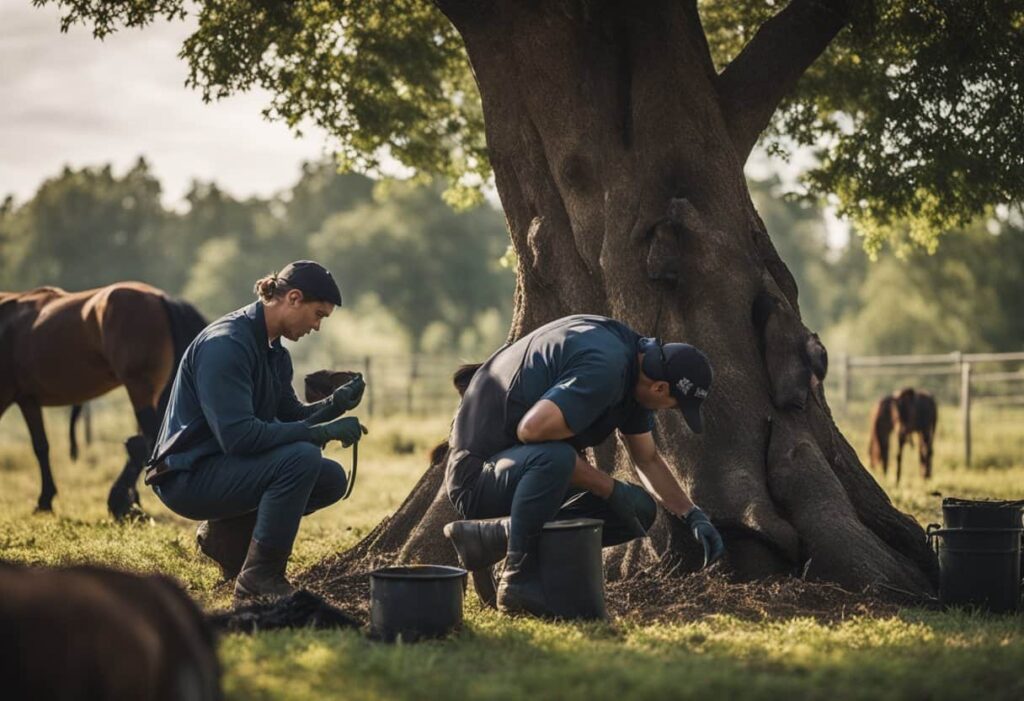
Legal and Ethical Considerations
In the context of trees toxic to horses, understanding the legal and ethical implications is crucial for horse owners and property managers. These considerations encompass both the protection of equine health and the adherence to legal standards to mitigate liability.
Property Liability
Property owners have a legal obligation to ensure that their land poses no undue risk to animals, including horses. When harmful trees are present, the property owner could be held responsible for any resulting harm to equines. Legal precedents have shown that failing to remove or adequately fence off toxic trees like the red maple can lead to penalties or legal action if horses become ill or die from ingesting parts of these toxic plants.
Welfare and Treatment Standards
Ethically and legally, horse owners and caretakers must adhere to established welfare standards, which include providing a safe environment free from toxic substances. Regulations often define minimal treatment standards to prevent the exposure of horses to toxic trees, as improper care could be construed as neglect or abuse. Ensuring equines’ safety against plants toxic to horses not only reflects ethical treatment but also complies with animal welfare laws.
Signs of Tree Poisoning in Horses
In identifying tree poisoning, attentive observation for immediate symptoms followed by awareness of possible long-term health consequences ensures timely intervention for affected horses.
Immediate Symptoms
When horses ingest toxic parts of trees, they may exhibit a range of immediate symptoms indicative of poisoning. These symptoms often require urgent veterinary attention:
- Colic: Abdominal pain, restlessness, and frequent attempts to lie down.
- Muscle Trembling: Uncoordinated movements and weakness.
- Difficulty Swallowing: Signs of choking, excessive drooling, or refusal to eat.
- Clinical signs such as labored breathing, irregular heartbeat, and laminitis—a painful condition seen as heat and swelling in the hooves.
Long-Term Health Consequences
Exposure to tree toxins may lead to long-term health consequences if not promptly treated:
- Anemia: Pale mucous membranes and increased heart rate can indicate a decrease in red blood cells.
- Continuous exposure or a large ingestion of toxins may result in chronic laminitis, and kidney or liver damage, affecting the horse’s overall health and performance.
- Some trees can cause cumulative toxic effects that may not be immediately apparent, making regular monitoring crucial for horses with suspected tree poisoning.
Management and Treatment of Poisoning
When a horse has been poisoned by toxic trees, rapid action is critical. The treatment plan typically involves removing the horse from the source of the poison, administering supportive care, and implementing strategies to prevent recurrence.
Emergency Response
In the event of poisoning, the first step is to immediately remove the horse from the toxic environment to prevent further ingestion of the harmful substances. Owners should then contact a veterinarian urgently as early intervention can be the difference between life and death. Symptoms of atypical myopathy, commonly caused by sycamore maple tree seeds (Acer pseudoplatanus), may include weakness and muscle stiffness; prompt recognition of these signs is vital.
Veterinary Interventions
The veterinarian will often administer activated charcoal if ingestion was recent to absorb toxins, accompanied by intravenous fluids to support kidney function and prevent dehydration. Anti-inflammatory and pain management medications may be used to control the symptoms. Specific treatments may be applied based on the toxin involved, such as anti-toxin serum for certain plant poisonings, as detailed in the research on management practices to reduce the risk of atypical myopathy.
Ongoing Care and Monitoring
After the initial emergency response and veterinary interventions, horses require close observation for signs of recovery or deterioration. Rhabdomyolysis, a breakdown of muscle tissue, can occur after poisoning, necessitating regular blood tests to monitor muscle enzymes and kidney function. Owners can work on prevention by managing pastures to reduce contact with toxic plants, such as trimming branches out of reach, as documented in the North Central United States study on toxic plants. Long-term care might also consist of a nutritional plan to support recovery, which should be developed in conjunction with a vet or equine nutritionist.

Frequently Asked Questions
This section addresses common inquiries regarding the identification and management of toxic trees in equine environments to ensure the safety and well-being of horses.
Which species of maple trees present a risk to equine health?
The Acer pseudoplatanus, or sycamore maple, is one of the species known to be toxic to horses. Horses exposed to these trees, especially during certain times of the year, may be at risk of poisoning.
Can horses safely graze in areas with sycamore trees?
It is advisable to prevent horses from grazing in areas with sycamore trees due to the risk of atypical myopathy, a serious muscle disease caused by ingesting sycamore tree seeds or seedlings.
Which characteristics make a tree species hazardous to horses?
Tree species are considered hazardous to horses if they contain toxins that can cause ill effects when ingested. These toxins may affect a horse’s metabolism, nervous system, or muscle function and can be found in leaves, seeds, or bark of certain trees.
What symptoms should I watch for if a horse has ingested toxic tree leaves?
Symptoms of poisoning from toxic trees can include colic, difficulty breathing, muscle tremors, and an increased heart rate. If a horse exhibits signs of distress or any unusual behavior, it is critical to consult a veterinarian immediately.
How can I prevent horses from accessing poisonous trees in their pasture?
One can reduce the risk by removing toxic trees from pastures, installing appropriate fencing to restrict access, and regularly inspecting the area for fallen leaves or branches that horses might ingest.
What are some common non-toxic trees to provide shade for horses?
There are several non-toxic tree options suitable for providing shade, such as ash, beech, and birch trees. These species do not pose a known risk to equine health and can offer a safe environment for horses.
Last Updated on December 11, 2023 by Nate Dewsbury
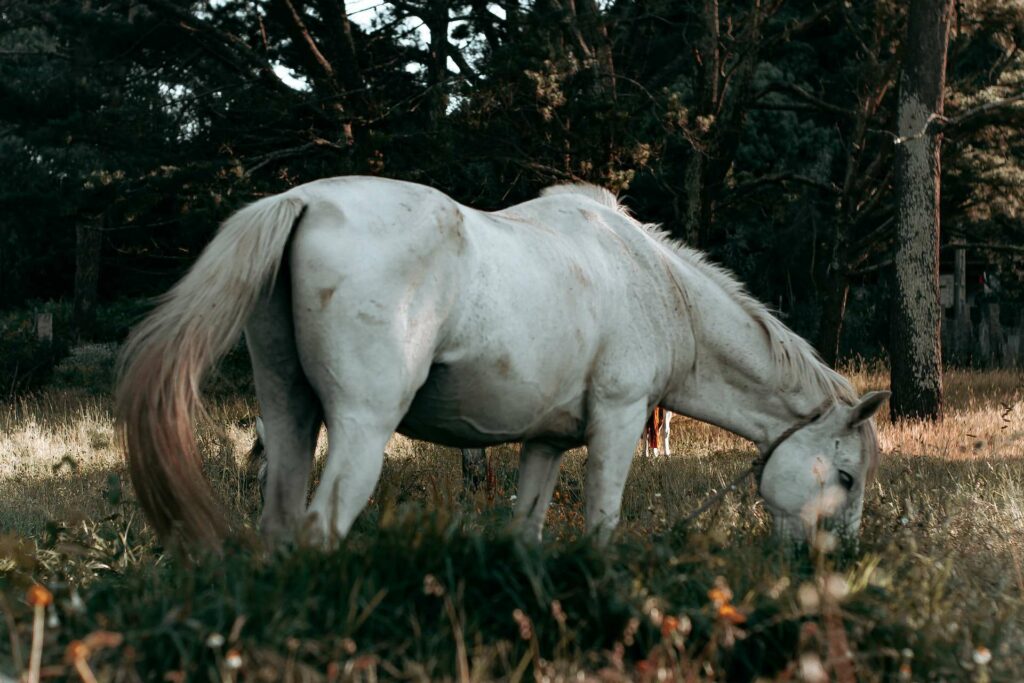
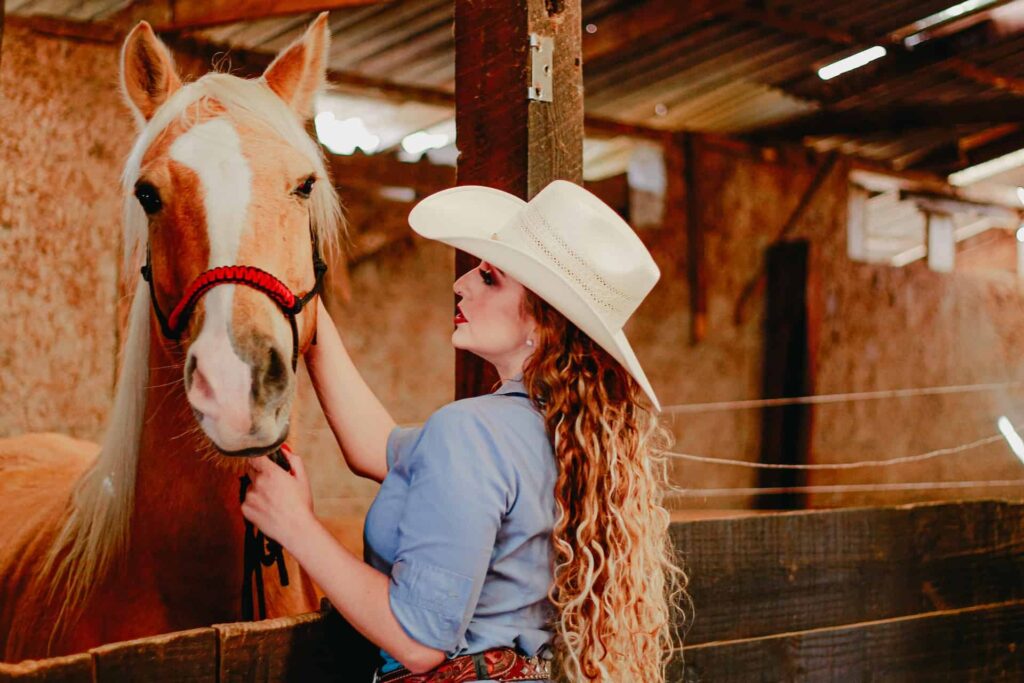
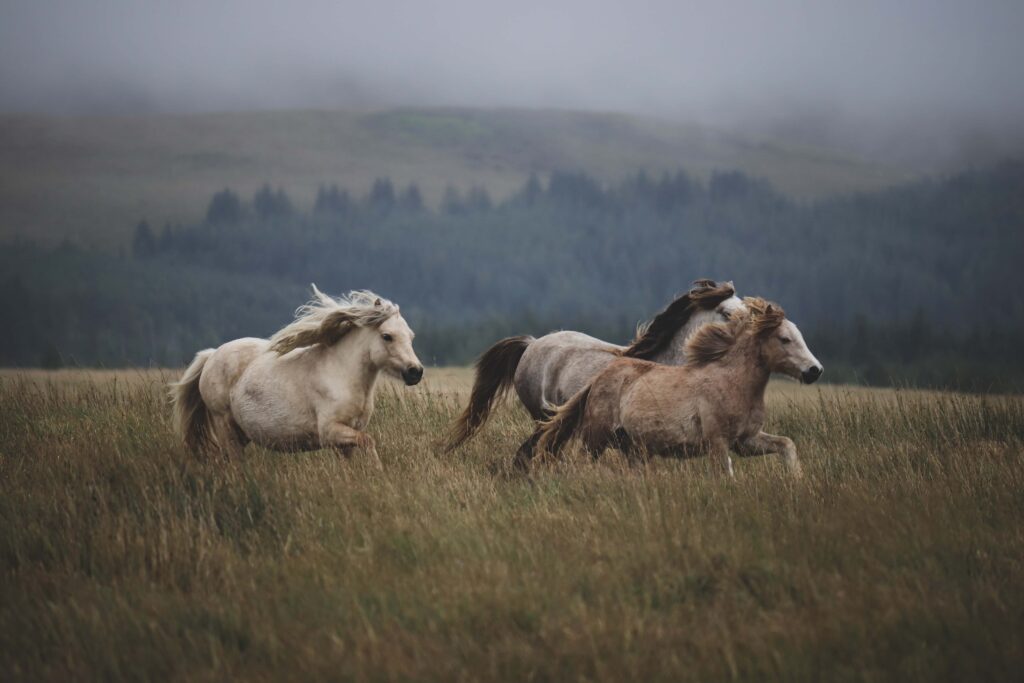

I love horses allot 👍 this helped allot. I really want to get a horse but my dad won’t get me one.im 10 years old.